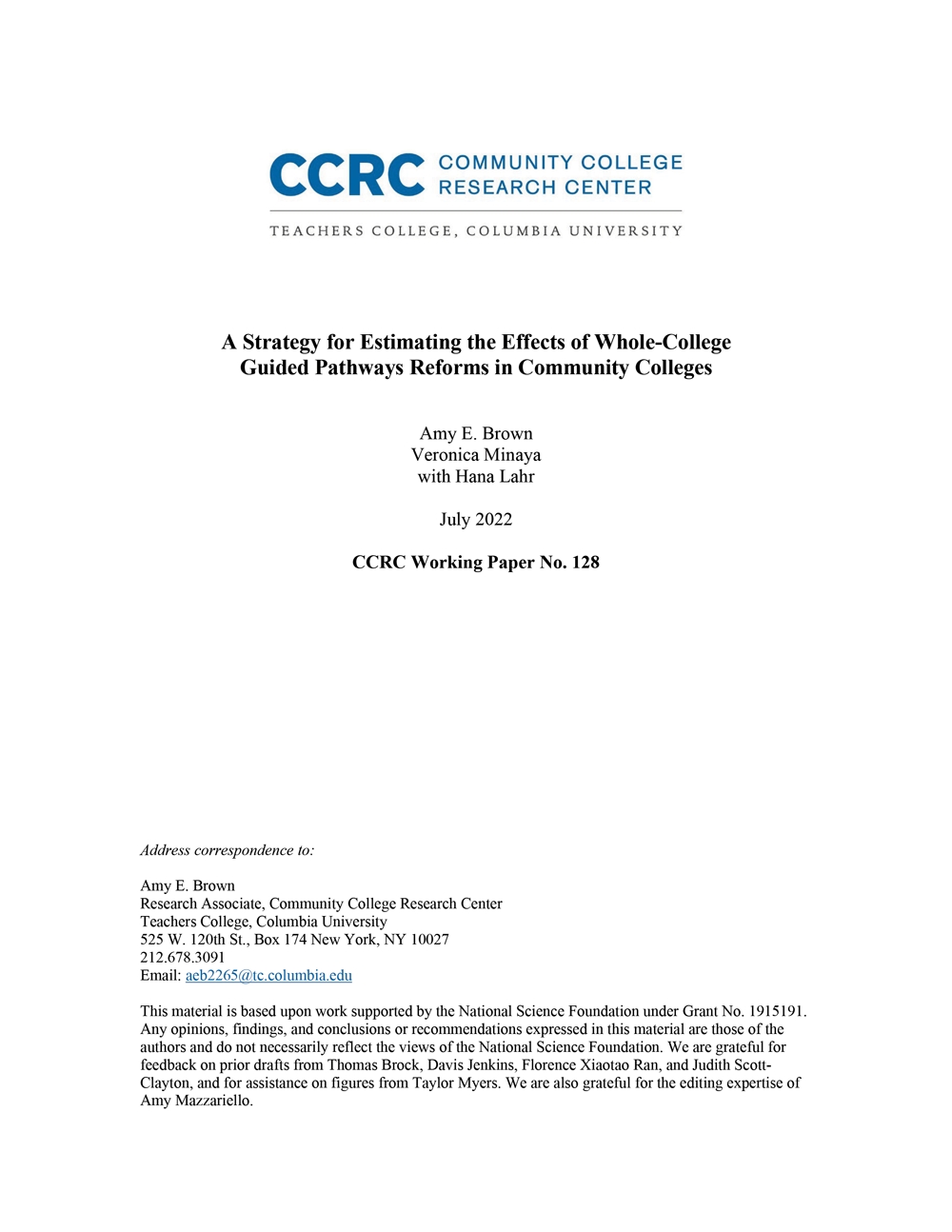
Approximately 450 community colleges nationally are part of formal statewide or national initiatives to implement guided pathways reforms to improve student success, and many other colleges are implementing guided pathways practices on their own. Because guided pathways is a whole-college reform—and because it takes several years to fully implement—it is challenging to evaluate. This paper presents a methodology for assessing the scale of adoption and estimating the causal effects of guided pathways within states and across colleges that have adopted the approach. To measure the scale of adoption of guided pathways practices, we will conduct institutional surveys and phone interviews with college leaders and examine the websites of every community college in Ohio, Tennessee, and Washington (70 institutions total). We plan to use these data to estimate each college’s scale of adoption using a rubric with indicators for scale and timing. Drawing on strategies used in K-12 whole-school reform evaluations, we propose to examine pre-reform adoption trends and apply a single interrupted time series design to project what students’ early outcomes would have been in the absence of guided pathways. We then propose to use a comparative interrupted time series design (which closely resembles a difference-in-differences approach) to exploit variation in the intensity of guided pathways practices and the timing of their adoption across colleges by comparing early student outcomes in colleges that have adopted guided pathways practices at scale and those that have not or those with a low scale of adoption.
